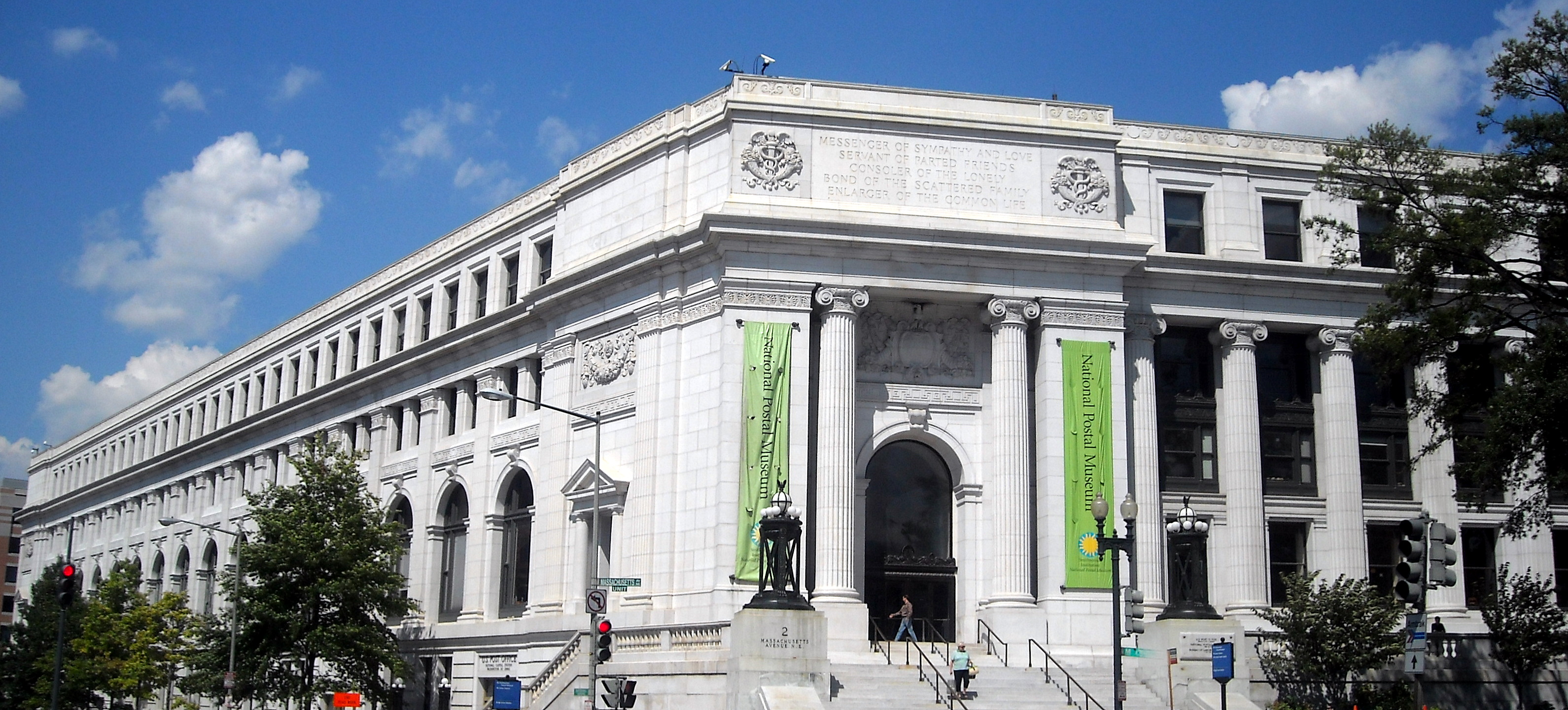|
Musée De La Poste
The Musée de La Poste (, ''La Poste's Museum'') is the museum of the French postal operator La Poste (France), La Poste. It specialises in the Postage stamps and postal history of France, postal history and philately of France. Opened in 1946, the museum has been located on two sites in Paris. The museum was closed for redevelopment from 2014 to November 2019. Genesis The idea of a postal museum was first published by philatelist Arthur Maury after scale models of postal rail transportation were exhibited at the Exposition Universelle (1889), Exposition Universelle of 1889 in Paris.Laurent Albaret, « Un musée sociétal, vitrine du patrimoine de La Poste », ''L'Écho de la timbrologie'', No. 1830, juin 2009, . Projects were written at the beginning of the 20th century, but nothing concrete was done. In 1936, Eugène Vaillé, a civil servant at the French posts' library, convinced Minister of Posts, Telegraphs, and Telephones (France), Minister of Posts, Telegraphs and T ... [...More Info...] [...Related Items...] OR: [Wikipedia] [Google] [Baidu] |
Postal Museum
A postal museum is a museum dedicated to the display of objects relating to the postal service. A subcategory of postal museums are philatelic museums, which focus on philately and postage stamps. List of postal and philatelic museums Africa Egypt *The Post Museum (Egypt), The Post Museum Ethiopia *Ethiopian National Postal Museum Kenya *German Post Office Museum] Mauritius *Blue Penny Museum *Mauritius Postal Museum Morocco *Postal Museum (Morocco), Postal Museum South Africa *South African Post Office Museum Americas Brazil * * Philatelic and Numismatic Brazilian Museum Canada *Canadian Postal Museum (closed) *First Toronto Post Office Costa Rica *Edificio Correos#Museo Filatélico de Costa Rica, Museo Filatélico de Costa Rica Cuba *Cuban Postal Museum Curaçao * Postal Museum Curaçao Guatemala *Guatemalan Postal & Philatelic Museum Mexico * Philatelic Museum of Oaxaca – Mexico Peru *Casa de Correos y Telegrafos, National Postal and Philatelic Museum ... [...More Info...] [...Related Items...] OR: [Wikipedia] [Google] [Baidu] |
Jean-Honoré Fragonard
Jean-Honoré Fragonard (; 5 April 1732 (birth/baptism certificate) – 22 August 1806) was a French painter and printmaker whose late Rococo manner was distinguished by remarkable facility, exuberance, and hedonism. One of the most prolific artists active in the last decades of the Ancien Régime, Fragonard produced more than 550 paintings (not counting drawings and etchings), of which only five are dated. Among his most popular works are genre paintings conveying an atmosphere of intimacy and veiled eroticism. Biography Jean-Honoré Fragonard was born in Grasse, Alpes-Maritimes, France the only child of François Fragonard, a glover, and Françoise Petit. Harrison, Colin (2003). "Fragonard, Jean-Honoré". Grove Art Online. Retrieved March 2024. Fragonard was apprenticed to a Paris notary when his father's circumstances became strained through unsuccessful speculations, but showed such talent and inclination for art that he was taken at the age of eighteen to François Bouc ... [...More Info...] [...Related Items...] OR: [Wikipedia] [Google] [Baidu] |
Marcophily
Marcophily, occasionally called Marcophilately, is the specialised study and collection of postmarks, cancellations and postal markings applied by hand or machine on mail that passes through a postal system and applied by the postal operator through whose domain they pass. Commatology was a term used prior to World War II but is rarely used today. Two branches of marcophilists exist - those who are mainly interested in the details, style and design of the markings, and those who take into account the political, social, and postal history surrounding them. Large cities that have many post offices offer great study opportunities due to the vast range of handstamps or machine cancellations in use over any time period. It offers vast study areas to select a topic from for study or collection. While strictly speaking it is not a postal history Postal history is the study of postal systems and how they operate and, or, the study of the use of postage stamps and Cover (philately), ... [...More Info...] [...Related Items...] OR: [Wikipedia] [Google] [Baidu] |
Philately
Philately (; ) is the study of postage stamps and postal history. It also refers to the collection and appreciation of stamps and other philatelic products. While closely associated with stamp collecting and the study of postage, it is possible to be a philatelist without owning any stamps. For instance, the stamps being studied may be very rare or reside only in museums. Etymology The word "philately" is the English transliteration of the French "", coined by Georges Herpin in 1864. Herpin stated that stamps had been collected and studied for the previous six or seven years and a better name was required for the new hobby than ''timbromanie'' (roughly "stamp mania"), which was disliked.Williams, L.N. & M. ''Fundamentals of Philately''. State College: The American Philatelic Society, 1971, p. 20. The alternative terms "timbromania", "timbrophily", and "timbrology" gradually fell out of use as ''philately'' gained acceptance during the 1860s. Herpin took the Greek root word φ ... [...More Info...] [...Related Items...] OR: [Wikipedia] [Google] [Baidu] |
Dijon
Dijon (, ; ; in Burgundian language (Oïl), Burgundian: ''Digion'') is a city in and the Prefectures in France, prefecture of the Côte-d'Or Departments of France, department and of the Bourgogne-Franche-Comté Regions of France, region in eastern France. the Communes of France, commune had a population of 156,920. The earliest archaeological finds within the city limits of Dijon date to the Neolithic Period (geology), period. Dijon later became a Roman Empire, Roman settlement named ''Divio'', located on the road between Lyon and Paris. The province was home to the Duke of Burgundy, Dukes of Burgundy from the early 11th until the late 15th centuries, and Dijon became a place of tremendous wealth and power, one of the great European centres of art, learning, and science. The city has retained varied architectural styles from many of the main periods of the past millennium, including Capetian, Gothic architecture, Gothic, and Renaissance architecture, Renaissance. Many still-i ... [...More Info...] [...Related Items...] OR: [Wikipedia] [Google] [Baidu] |
XVe Arrondissement
The 15th arrondissement of Paris () is one of the 20 arrondissements of the capital city of France. In spoken French, it is referred to as ('the fifteenth'). The 15th arrondissement, called , is situated on the left bank of the River Seine. Sharing the Montparnasse district with the 6th and 14th arrondissements, it is the city's most populous arrondissement, with a population of 229,472 as of 2020. – the tallest skyscraper in Paris – and the neighbouring are both located in the 15th arrondissement, at its border with the 14th. It is also home to the high-rise Beaugrenelle district and the riverside development, as well as the convention centre, where the 180-metre Tour Triangle is set to house a 120-room hotel and of office space in 2026. Close is the , the city heliport, just nearby the border with . History The decreed the annexation to Paris of the area between the old ''Wall of the Ferme générale'' and the Wall of Thiers. The communes of , and were inco ... [...More Info...] [...Related Items...] OR: [Wikipedia] [Google] [Baidu] |
Gare Montparnasse
Gare Montparnasse (; Montparnasse station), officially Paris Montparnasse, is one of the seven large List of Paris railway stations, Paris railway termini, and is located in the 14th arrondissement of Paris, 14th and 15th arrondissement of Paris, 15th arrondissements. The station opened in 1840, was rebuilt in 1852 and relocated in 1969 to a new station just south of the original location, where subsequently the prominent Montparnasse Tower was constructed. It is a central element to the Montparnasse area. The original station is noted for the Montparnasse derailment, where a steam train crashed through the station in 1895, an event captured in widely known photographs and reproduced in full scale in several locations. The station serves intercity TGV trains to the west and southwest of France including Tours, Bordeaux, Rennes and Nantes, and suburban and regional services on the Transilien Paris – Montparnasse routes. There is also a Montparnasse – Bienvenüe (Paris M� ... [...More Info...] [...Related Items...] OR: [Wikipedia] [Google] [Baidu] |
Jean Pheulpin
Jean may refer to: People * Jean (female given name) * Jean (male given name) * Jean (surname) Fictional characters * Jean Grey, a Marvel Comics character * Jean Valjean, fictional character in novel ''Les Misérables'' and its adaptations * Jean Pierre Polnareff, a fictional character from ''JoJo's Bizarre Adventure'' * Jean Luc Picard, fictional character from ''Star Trek Next Generation'' Places * Jean, Nevada, United States; a town * Jean, Oregon, United States Entertainment * Jean (dog), a female collie in silent films * "Jean" (song) (1969), by Rod McKuen, also recorded by Oliver * ''Jean Seberg'' (musical), a 1983 musical by Marvin Hamlisch Other uses * JEAN (programming language) * USS ''Jean'' (ID-1308), American cargo ship c. 1918 * Sternwheeler Jean, a 1938 paddleboat of the Willamette River See also *Jehan * * Gene (other) * Jeanne (other) * Jehanne (other) * Jeans (other) * John (other) * Valjean (other) ... [...More Info...] [...Related Items...] OR: [Wikipedia] [Google] [Baidu] |
André Chatelin
André — sometimes transliterated as Andre — is the French and Portuguese form of the name Andrew and is now also used in the English-speaking world. It used in France, Quebec, Canada and other French-speaking countries, as well in Portugal, Brazil and other Portuguese-speaking countries. It is a variation of the Greek name ''Andreas'', a short form of any of various compound names derived from ''andr-'' 'man, warrior'. The name is popular in Norway and Sweden. Cognate names Cognate names are: * Bulgarian: Andrei, |
Postage Stamp
A postage stamp is a small piece of paper issued by a post office, postal administration, or other authorized vendors to customers who pay postage (the cost involved in moving, insuring, or registering mail). Then the stamp is affixed to the face or address-side of any item of mail—an envelope or other postal cover (e.g., packet, box, mailing cylinder)—which they wish to send. The item is then processed by the postal system, where a postmark or Cancellation (mail), cancellation mark—in modern usage indicating date and point of origin of mailing—is applied to the stamp and its left and right sides to prevent its reuse. Next the item is delivered to its address. Always featuring the name of the issuing nation (with the exception of the Postage stamps and postal history of the United Kingdom, United Kingdom), a denomination of its value, and often an illustration of persons, events, institutions, or natural realities that symbolize the nation's traditions and values, every ... [...More Info...] [...Related Items...] OR: [Wikipedia] [Google] [Baidu] |






